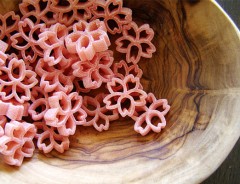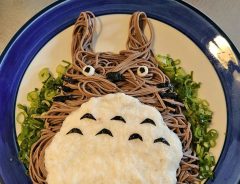Related Article
-

Sakura Shaped Pasta Turn Any Dish Into Your Own Personal Hanami
-

Japanese vending machine stubbornly refuses to sell hot cocoa, with hilarious results
-

Japan Celebrates “Godzilla Day” With Godzilla Tail Spicy Noodles And Scaly Fried Chicken
-

Udon Gummies–Just In Case You Wanted To Try Eating Gummies As Noodles
-

My Neighbor Totoro as a delicious serving of soba noodles
-

Japanese diner likes his yakisoba noodles and they like him back



"Beware of sōmen!"
Such was the warning issued in a tweet by Artur Galata (@ArturGalata), a Latvian social media influencer and frequent visitor to Japan who loves Japanese food and culture.
Artur made one big mistake when he cooked sōmen noodles for the first time.
If you haven't heard of them before, sōmen (shown below) are very thin noodles made of wheat flour, less than 1.3 mm in diameter. You could think of them as the Japanese equivalent of angel hair pasta.
Based on his experience, he had the following message for anyone considering going to Japan (and staying at a place where they'll be cooking for themselves):
"(...) They look so thin at first glance that you may think you'd be able to eat a whole lot of them without any problem but you'd be wrong! You'll be amazed by how much these little guys grow. When you cook them, they get bigger and bigger as time goes by! You should only eat one bunch! I boiled four bunches and ended up crying."
The problem of boiling too much sōmen noodles...
Although the amount varies from person to person, the standard amount for one person is said to be one or two bunches.
At first glance, they may not look like much but even for those with a big appetite, four bunches of sōmen may be a bit much. Especially since Artur may have actually boiled even more than that! A commenter pointed out that packages of sōmen usually don't contain only four bunches, so if he had emptied out the contents, he would have in fact eaten five bunches! No wonder he was crying.
His Tweet received many sympathetic comments, such as:
By the way, excess sōmen can be drained and stored in a Tupperware container in the refrigerator for about one day.
It's also delicious remade as にゅう麵 nyūmen, a hot noodle soup, or stir-fried as チャンプルー chanpurū, an Okinawan stir-fried dish with noodles and vegetables.